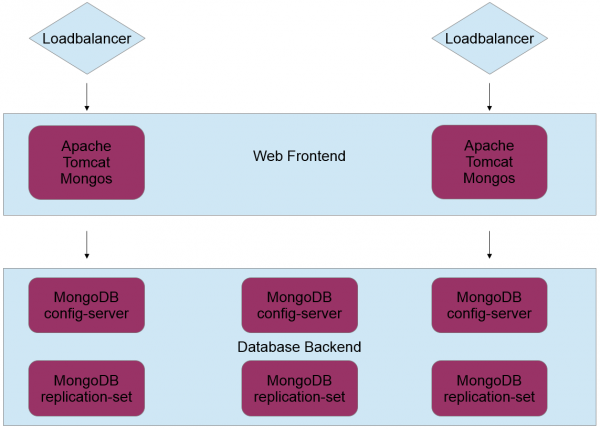Difference between revisions of "Infrastructure"
| Line 1: | Line 1: | ||
| + | [[File:OpenCellID server strukture.PNG|right|600px]] | ||
{| width=998px | {| width=998px | ||
| | | | ||
==Servers== | ==Servers== | ||
| − | + | ||
{| class="wikitable sortable" style="font-size: 85%; text-align: left;" | {| class="wikitable sortable" style="font-size: 85%; text-align: left;" | ||
|- | |- | ||
Revision as of 23:37, 23 January 2014
ContentsServers
Software stackOperating SystemAll OpenCellID servers are running with Ubuntu Linux 12.04 LTS. Frontend
Database BackendThe database backend, with a current 4.4 million cell towers and about 565 million measurements (1.1.2014), is a MongoDB database cluster with six servers:
Challenges and solutionsThe OpenCellID community is very strong and continously provides a high number of measurements.
The current solutions are based on MongoDB and its features:
The brainKrzysztof Ociepa (email: [email protected]) has designed the big-data infrastructure as well as the new OpenCellID server software based on Java and MongoDB, and has also implemented most of the current features after two other developers failed to do so. Details about the implemented software and infrastructure can be found above. There are plans to publish the entire server software as open source for stimulating the contribution of software features of other community members of the OpenCellID project. |
